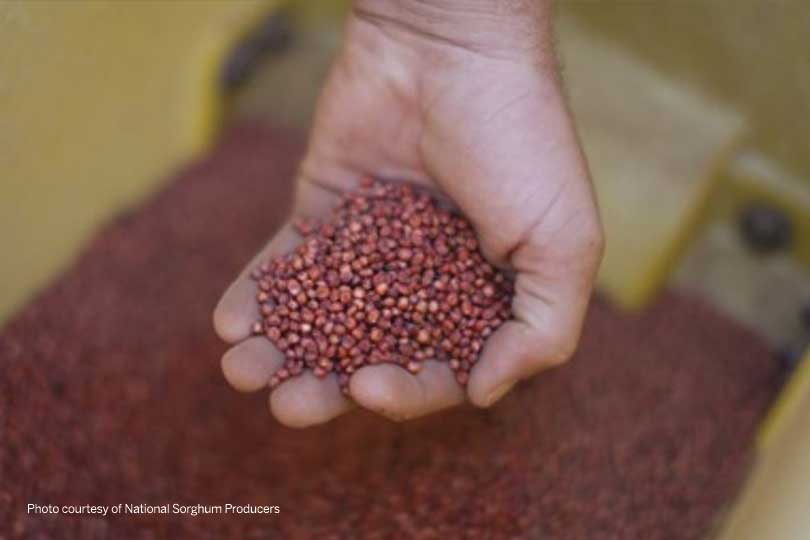By Justin Walker
Communications Specialist
Due to an abundance of rain this planting and growing season, some growers are looking for a replacement crop for their rained-out fields. Grain sorghum could be a good choice, Dr. Brent Bean, Sorghum Checkoff agronomist, said.
“Grain sorghum provides a number of benefits to growers as we enter a replant and late/prevent plant time period for the 2019 growing season,” Bean said. “There is typically a yield benefit for soybeans, cotton and corn when planted after sorghum. In addition, its root system is often able to penetrate compacted soils and can reduce diseases and nematodes that plague other crops.”
While it is later in the season, it is typical for sorghum to be planted later than other crops, Bean said. It is also a lower risk option in terms of seed costs. Depending on seed rate, sorghum seed will range from $8 to $18. Corn seed can be as much as $55 to $110, based on seeding rate and traits.
Harvest costs also are typically lower for sorghum, he said.
Other crops have seen a significant impact from Chinese tariffs on the U.S., but China imported multiple vessels of American-grown grain sorghum in May. This demand and other market signals point to an optimistic future for the crop, National Sorghum Producers CEO Tim Lust said.
“Despite trade uncertainty, demand for feed grain remains strong across the globe,” Lust said. “Furthermore, anticipated feed grain shortages from areas impacted by adverse planting weather will create significant localized demand for additional starch sources like sorghum.”
NSP will continue to receive feedback from ethanol plants and others in order to fill the supply gaps during the winter, Lust said. Some bids for sorghum have already been posted, while others are in progress.
While sorghum may be a good replacement crop, growers should consider the U.S. Department of Agriculture’s Market Facilitation Program (MFP) payment guidelines, Lust said. Final plant dates for crop insurance should also be considered as they vary by region.
Click here for more information, including additional agronomic and marketing resources.

